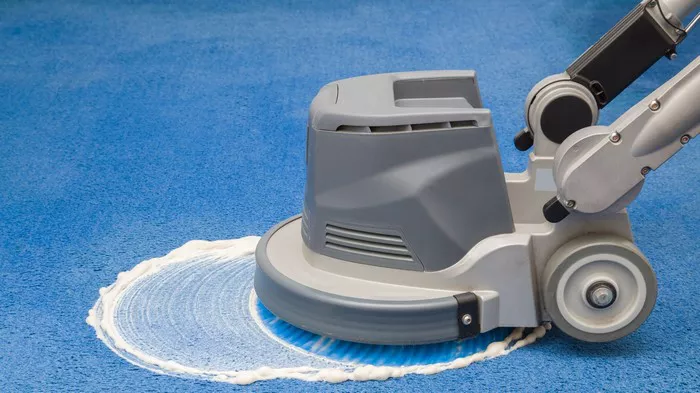Manual sweepers have long been a staple in both household and commercial cleaning routines. These handy devices are designed to offer a convenient and eco-friendly alternative to more complex and power-dependent cleaning machines like vacuum cleaners. With their simple mechanics and ease of use, manual sweepers serve a vital role in floor maintenance. To address the burning question: “Do manual sweepers work?“—the answer is yes, they do work effectively within certain limitations. They are particularly suited for specific tasks and environments where their unique advantages can shine.
I. How Manual Sweepers Work
Manual sweepers operate on a straightforward mechanical principle, making them user-friendly and maintenance-light. At the heart of their design are a series of brushes and rollers connected to a collection mechanism, often a built-in dustpan.
When you push a manual sweeper forward, the wheels drive the rotating brushes. These brushes are strategically positioned to capture debris and direct it towards the center of the sweeper. The debris is then lifted by the brushes and deposited into the dustpan. This process is purely mechanical, relying on the manual effort of pushing the sweeper.
There are various types of manual sweepers designed to cater to different needs:
1. Carpet Sweepers: These are equipped with soft, rotating brushes designed to pick up debris from carpeted surfaces. They are ideal for low-pile carpets and rugs.
2. Push Sweepers with Bins: These are generally larger and more robust, designed for hard floors and outdoor areas. They have larger bins for holding debris, making them suitable for extended use without frequent emptying.
See also: What You Need to Know: Do Robotic Pool Cleaners Stay in the Pool?
II. Effectiveness of Manual Sweepers
Advantages:
1. Simple to Use and Requires No Electricity: One of the most significant benefits of manual sweepers is their simplicity. There are no cords to manage, no batteries to charge, and no reliance on electrical outlets. This makes them incredibly convenient and versatile for quick cleanups.
2. Great for Quick Cleanups and Small Areas: Manual sweepers excel in situations where a full-sized vacuum cleaner would be overkill. They are perfect for tidying up small messes quickly without the hassle of setting up and storing a vacuum.
3. Effective on Larger Debris: Items like crumbs, leaves, and pet hair are easily picked up by manual sweepers. Their brushes are designed to capture and lift larger particles effectively.
4. Often Quieter than Vacuum Cleaners: For those sensitive to noise or living in environments where noise levels are a concern, manual sweepers offer a much quieter operation compared to vacuum cleaners.
Limitations:
1. Requires Physical Effort to Push: Unlike electric vacuum cleaners, manual sweepers require physical effort to operate. This can be a drawback for individuals with mobility issues or those who tire easily.
2. Ineffective for Deep Cleaning or Fine Dust: Manual sweepers are not designed to replace vacuums for deep cleaning tasks. They are less effective at picking up fine dust and allergens embedded in carpet fibers or floor cracks.
3. May Not Be Suitable for Large or Heavily Soiled Spaces: In areas that require extensive cleaning or have significant dirt buildup, manual sweepers may not be sufficient. Their capacity and efficiency are limited compared to more powerful cleaning machines.
III. When to Use a Manual Sweeper
Ideal for:
1. Sweeping Up Small Messes on Bare Floors or Low-Pile Carpets: Manual sweepers are perfect for quick, everyday cleanups on hard surfaces and low-pile carpets. They efficiently handle small debris without the need for a full cleaning session.
2. Quick Cleanups in Kitchens, Workshops, or Entryways: These areas often experience frequent, minor messes like crumbs, sawdust, or dirt tracked in from outside. A manual sweeper can quickly restore order without much hassle.
3. Outdoor Use on Patios, Decks, or Sidewalks: Manual sweepers are also effective outdoors for sweeping up leaves, sand, and other debris. Their portability and ease of use make them suitable for maintaining outdoor spaces.
IV. Conclusion
In summary, manual sweepers are a valuable tool for specific cleaning tasks. They are easy to use, do not require electricity, and are effective for quick cleanups and larger debris. However, they do have limitations, particularly in terms of physical effort required and their ability to handle fine dust or large areas. For deep cleaning needs, a vacuum cleaner may be a better option.
See also: The Numerous Benefits of a Lawn Sweeper: A Complete Overview
V. Additional Considerations
When selecting a manual sweeper, consider features such as:
1. Brush Types: Different brushes are suited for different surfaces. Soft brushes are better for carpets, while stiffer brushes work well on hard floors.
2. Height Adjustment: Adjustable height can make a sweeper more versatile, allowing it to handle different floor types more effectively.
3. Bin Capacity: Larger bins mean you can clean longer without needing to empty the sweeper frequently.
To use a manual sweeper effectively, follow these tips:
1. Empty the Bin Regularly: Keeping the bin clear of debris ensures optimal performance and prevents clogging.
2. Use Multiple Passes for Stubborn Dirt: For areas with more embedded dirt, multiple passes may be necessary to achieve a thorough clean.
By understanding their capabilities and limitations, you can make the most of manual sweepers for your cleaning needs, ensuring a cleaner and more pleasant environment.

